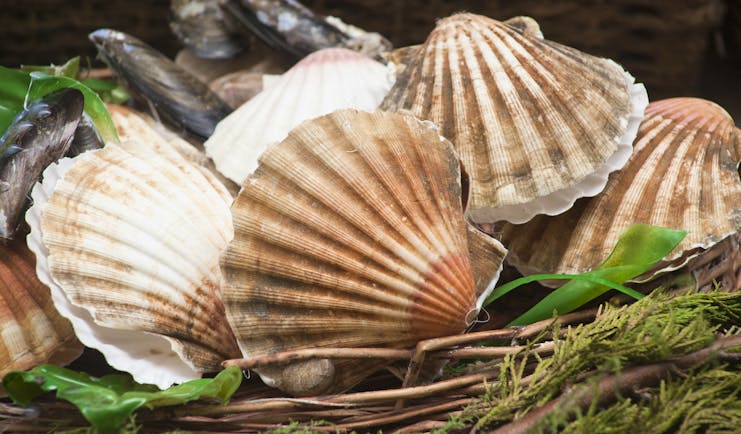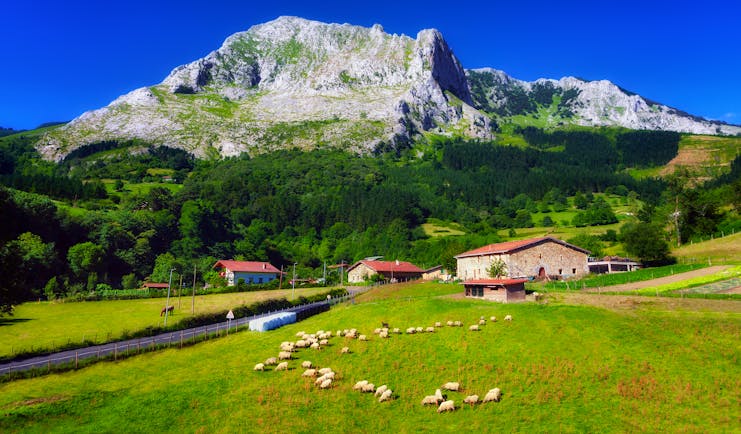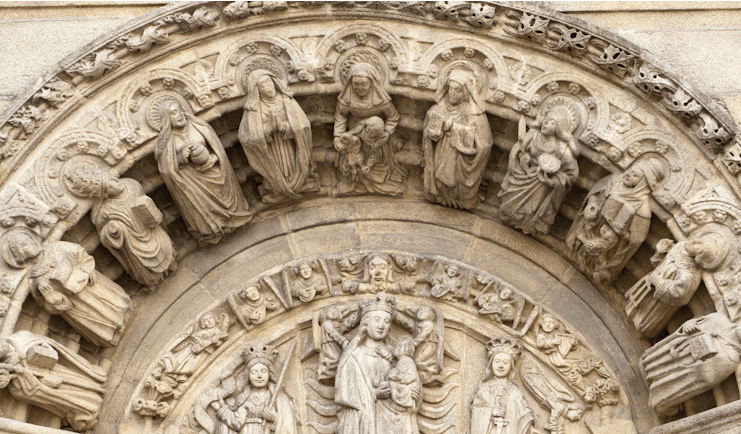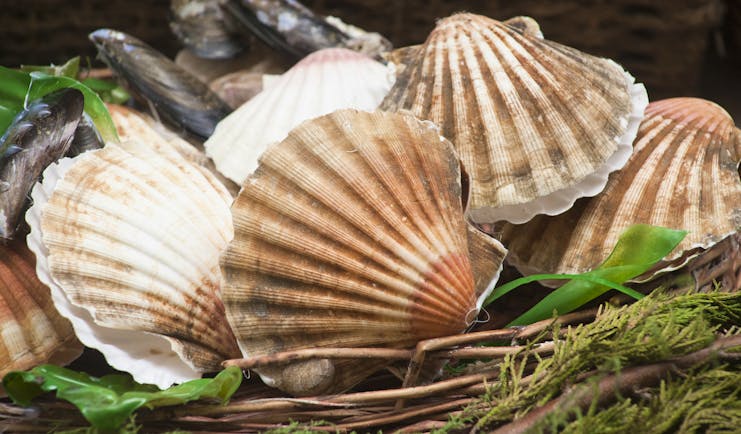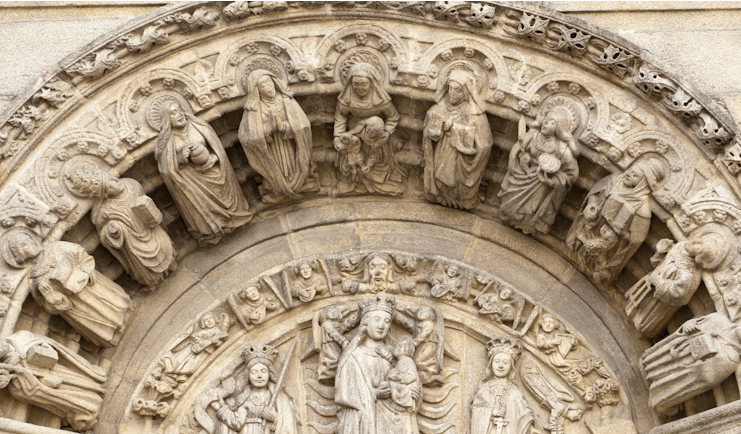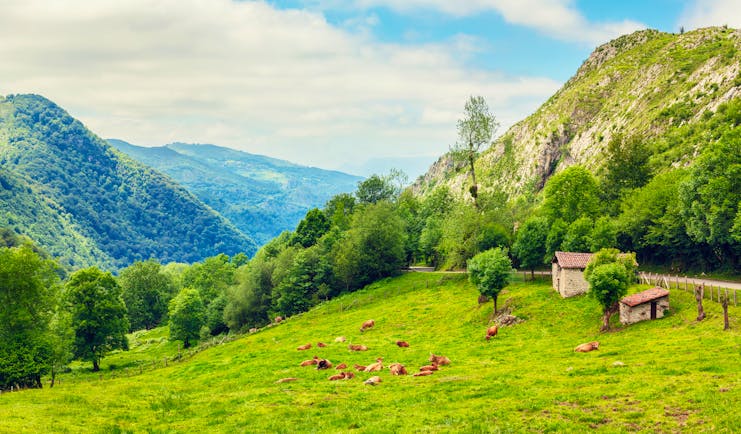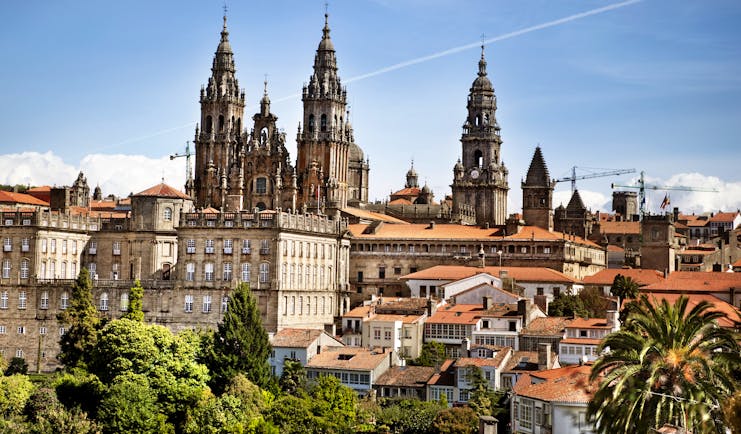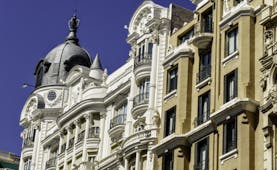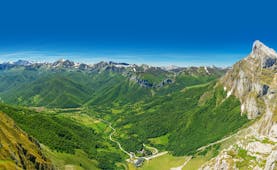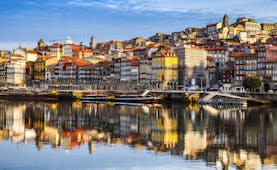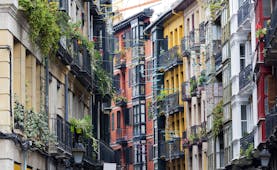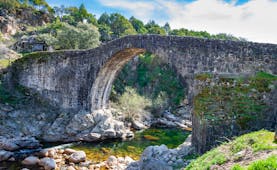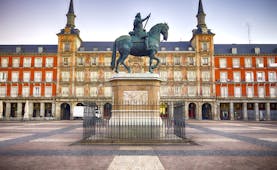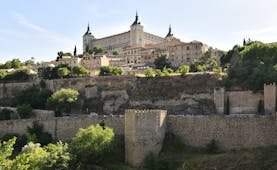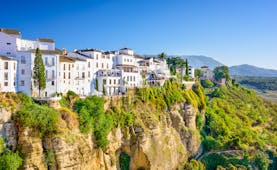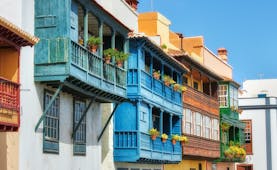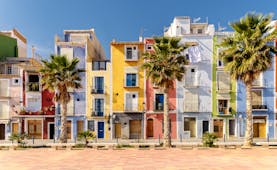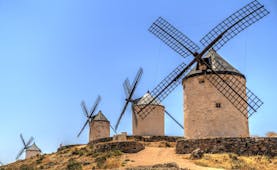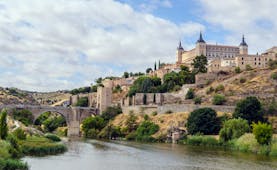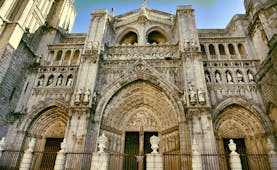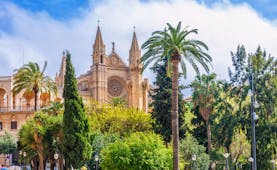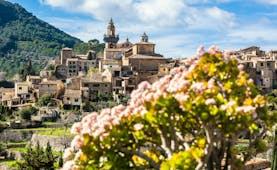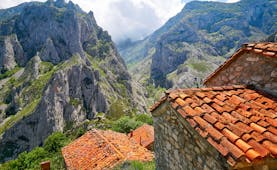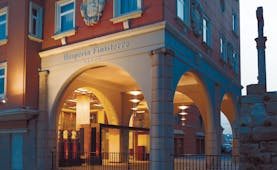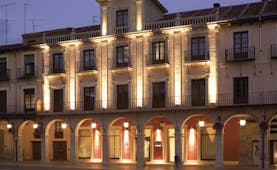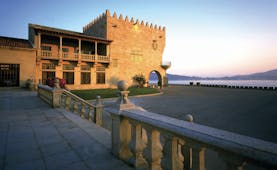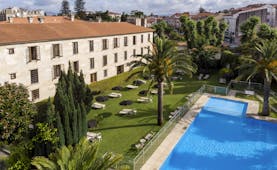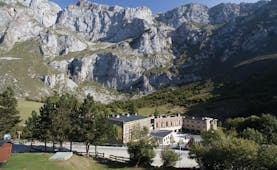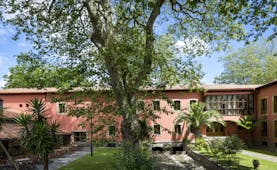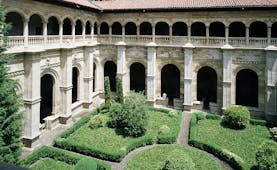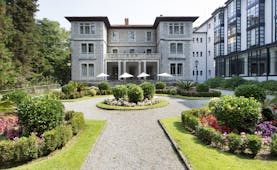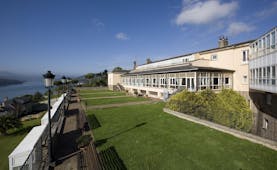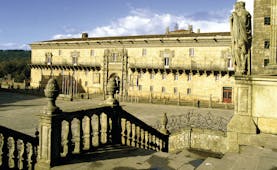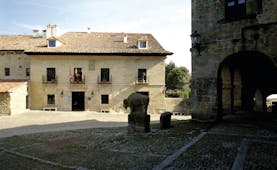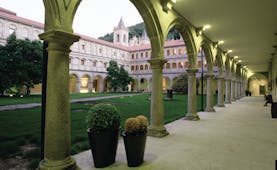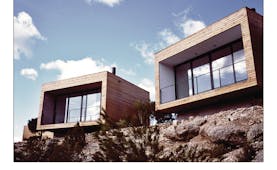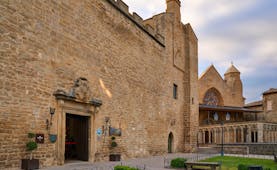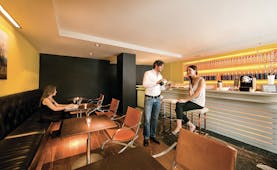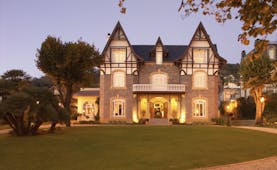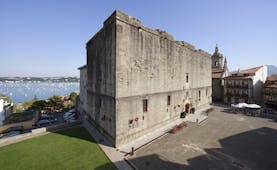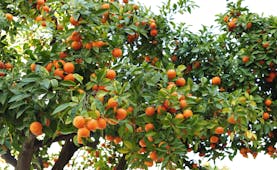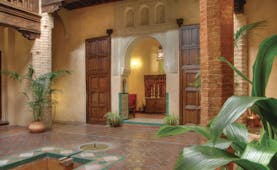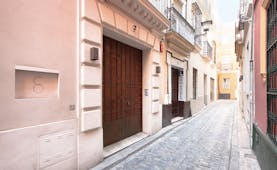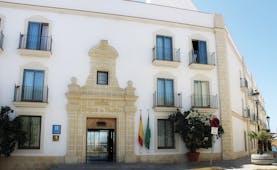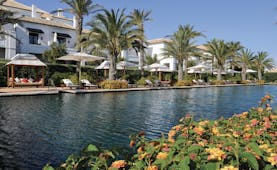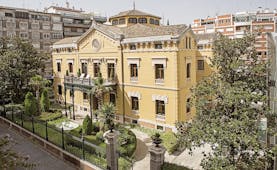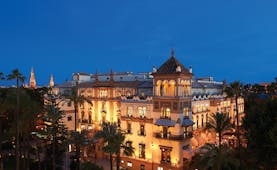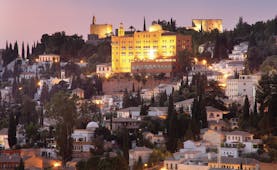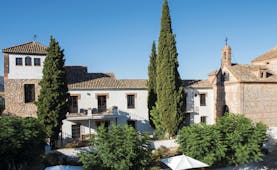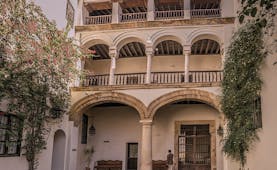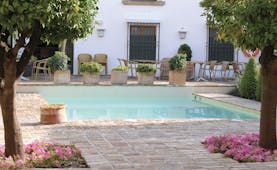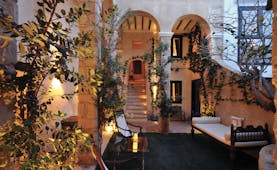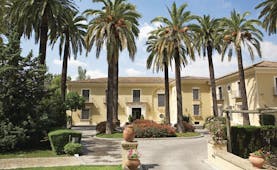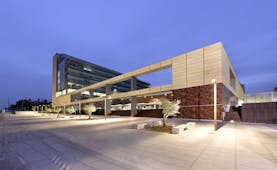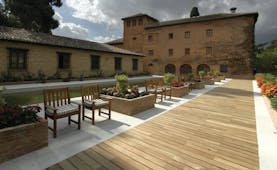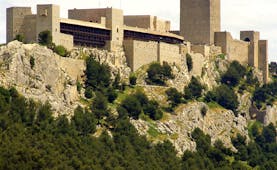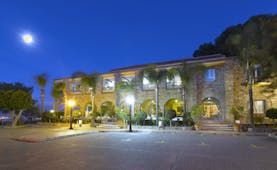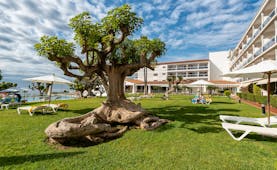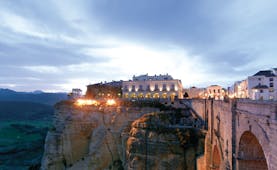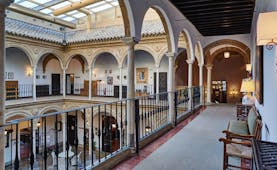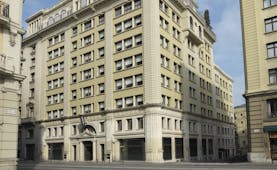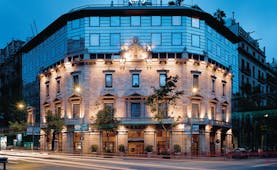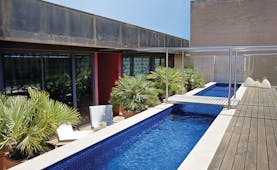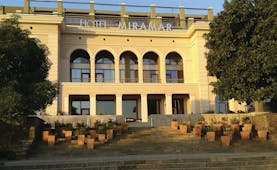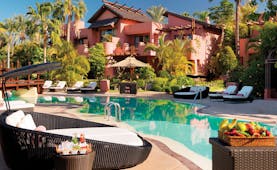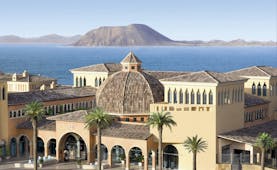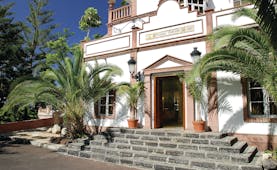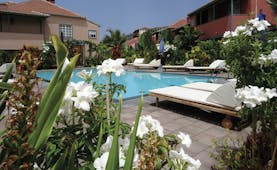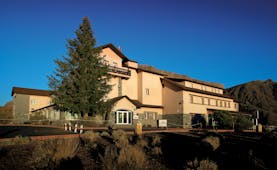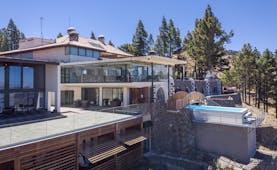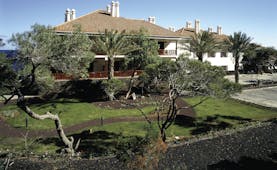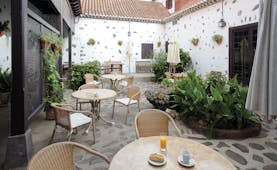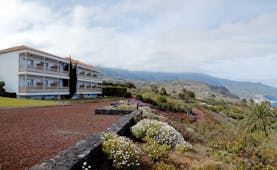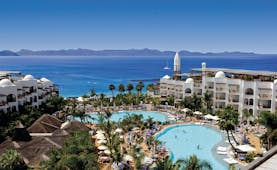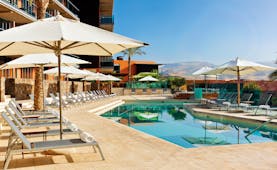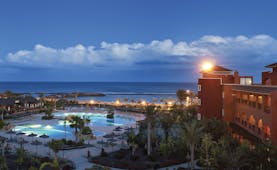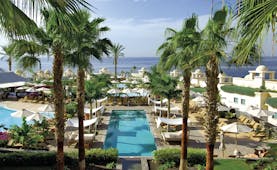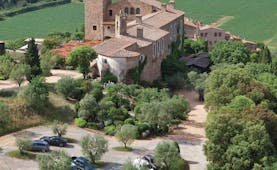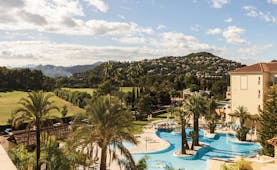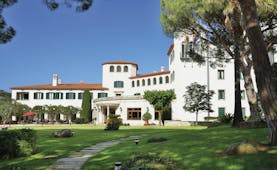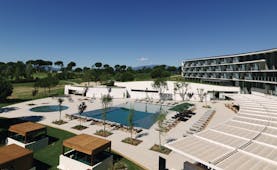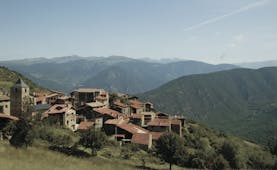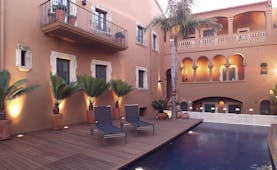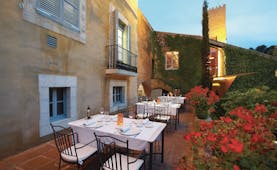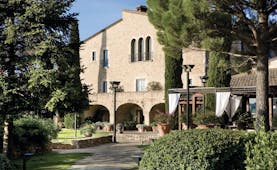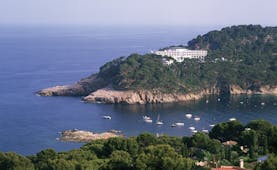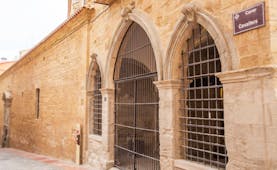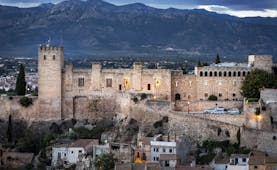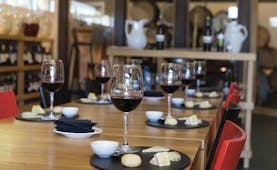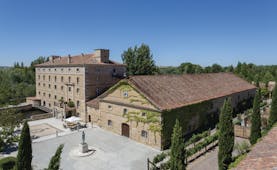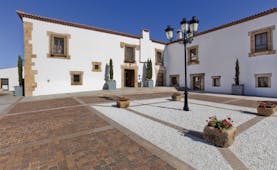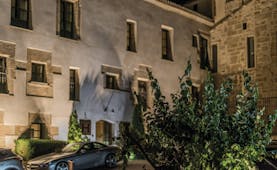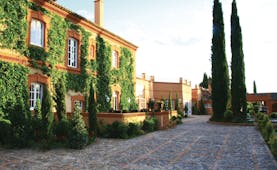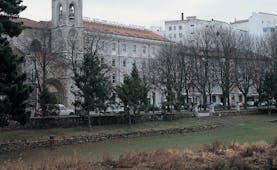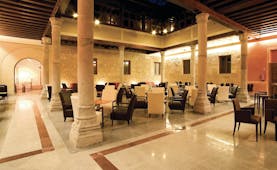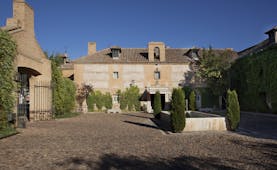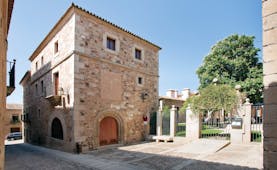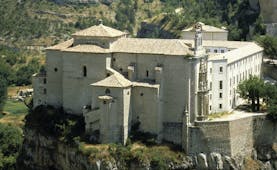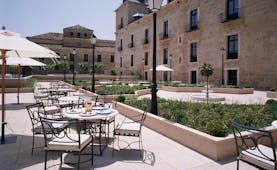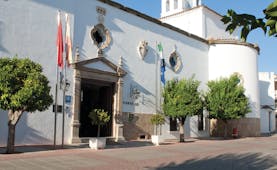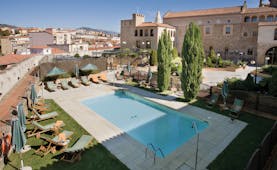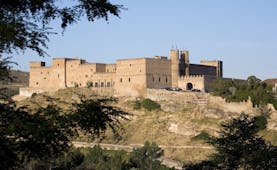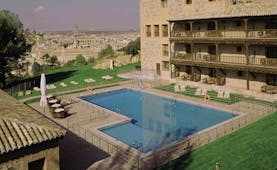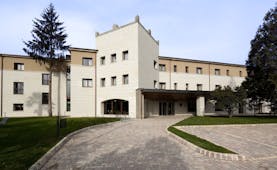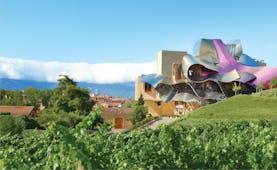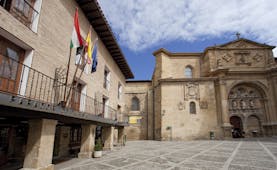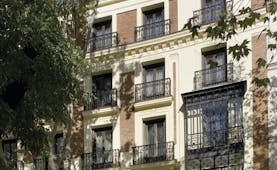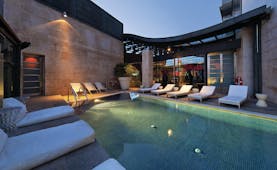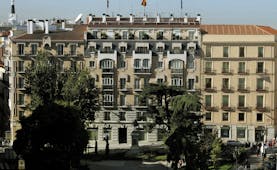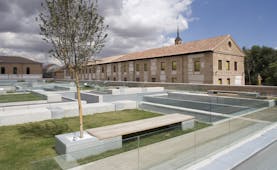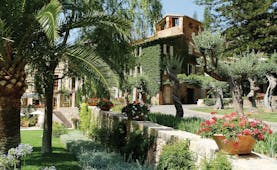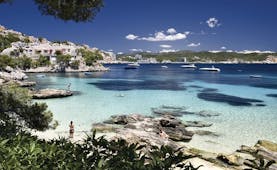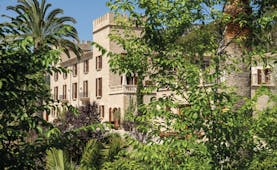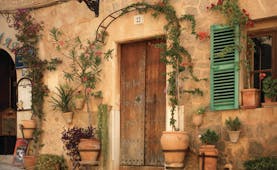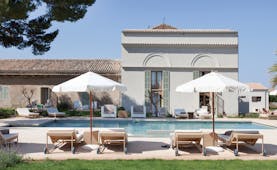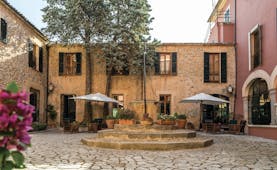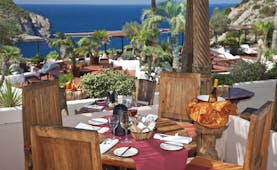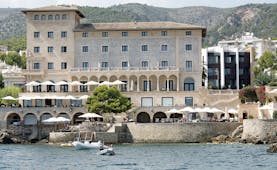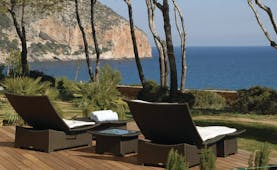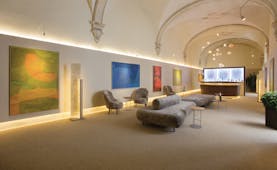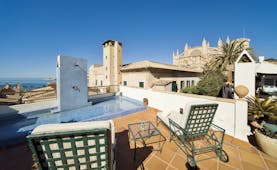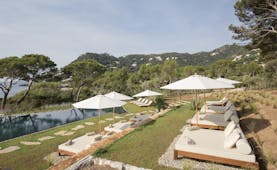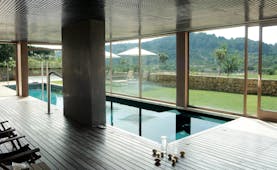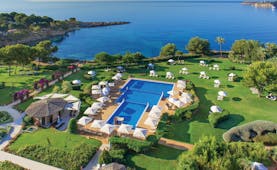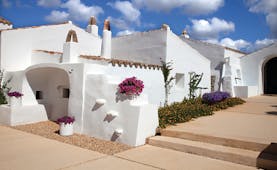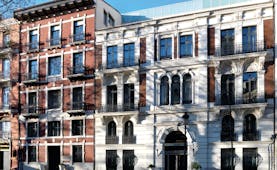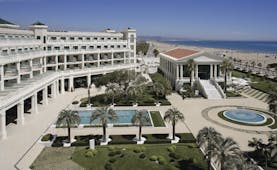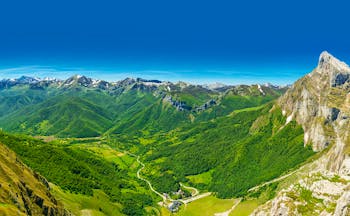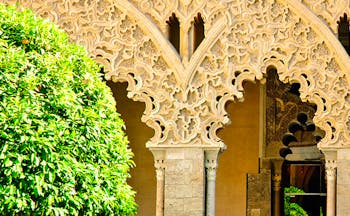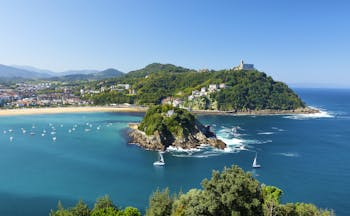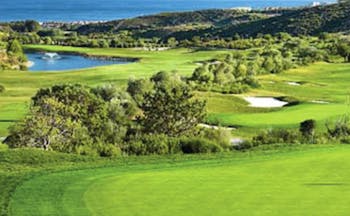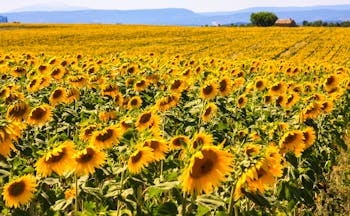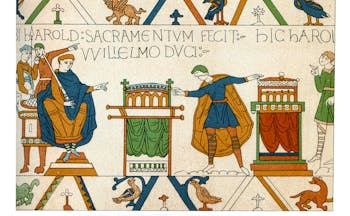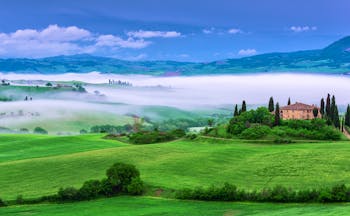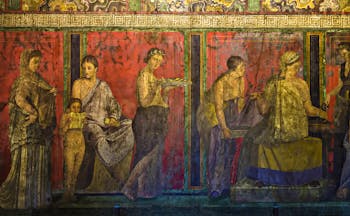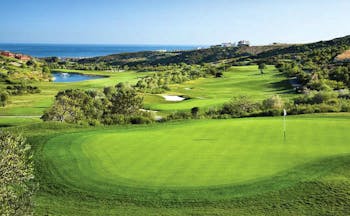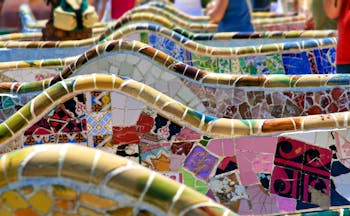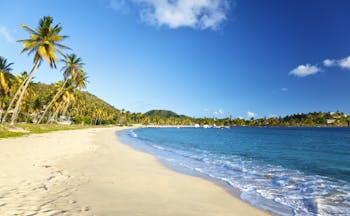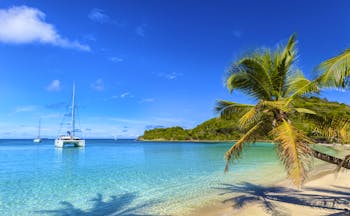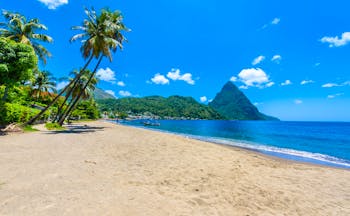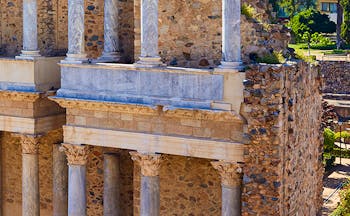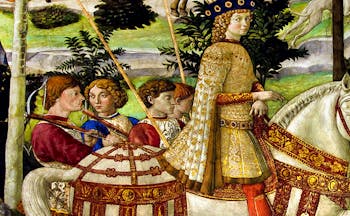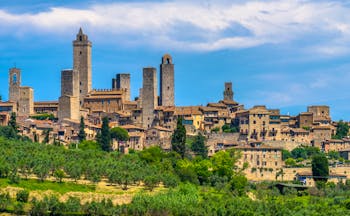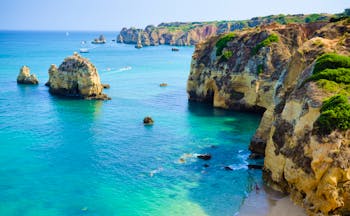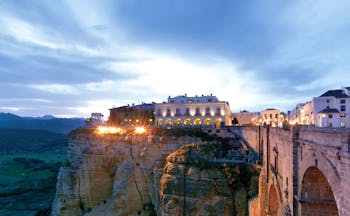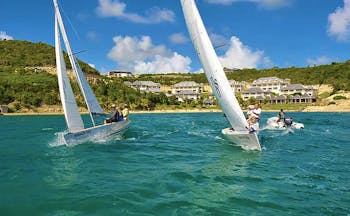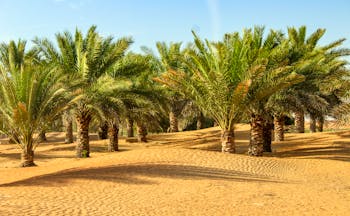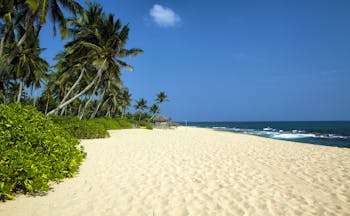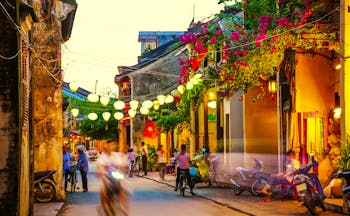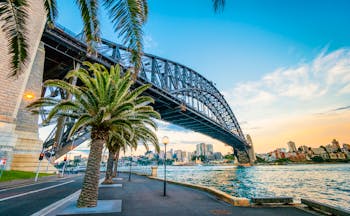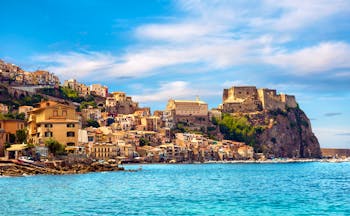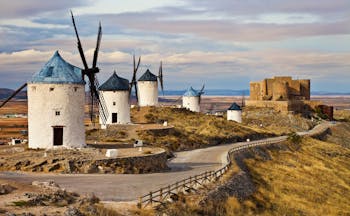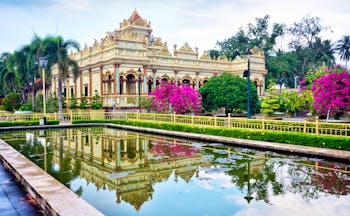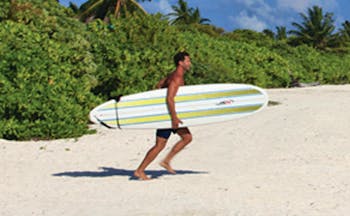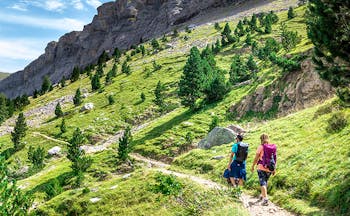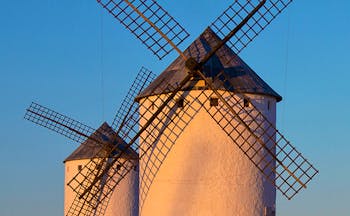Luxury fly-drive touring holiday following the Way of Saint James from Pamplona to Santiago de Compostela, staying in Burgos, Leon and Santo Estevo
This 10-night fly-drive touring holiday of northern Spain follows the pilgrimage route of Saint James from Pamplona to Santiago de Compostela. There are several pilgrimage routes across Spain to Santiago Compostela, but the most popular, and the best-known, is the Way of Saint James, which runs from southwest France, and into Spanish towns and cities such as Pamplona, Burgos, and León. This luxury touring holiday joins this route after your arrival in Bilbao. Spend your first two nights in Pamplona. This ancient walled city was founded by the Romans, but is now the capital of the Navarre province and home to the Running of the Bulls, a famous Spanish festival. On your third day, join the Saint James Route in Burgos. Spend time exploring the Gothic tour-de-force that is the Our Lady of Burgos Cathedral, and the Abbey of Santa María la Real de Las Huelgas, as well as enjoying the local food. Continue from here to Leon and explore every corner of this ancient walled city, seeking out the buildings of religious and cultural significance, and admiring the modern works of Gaudi. Drive off the Saint James Way for two nights in the Parador de Santo Estevo, nestling in a privileged location amidst the green hills and mountains of Galicia. Take this opportunity to relax and experience nature, or to explore the city of Ourense with its many bridges, virtually untouched by tourism. Finally, arrive on your tenth day in Santiago de Compostela, final resting place of Saint James the Apostle, and your destination on this luxury tour. Marvel at the beauty of the cathedral, drive up to the Rías Baixas inlets, sample the excellent seafood, and spend your last two nights in the Parador, an old royal hospital just on the doorstep of the city’s cathedral. From the inland capital to the beautiful Atlantic coast, this tour captures the scope and beauty of the Saint James Way, but with all the comforts and relaxation of four- and five-star accommodation. End your tour by flying home from Santiago de Compostela.
Highlights
Pamplona • Parque Natural Urbasa Andia • Logroño • Rioja vineyards • Burgos • Abbey of Santa María la Real de Las Huelgas • Leon • Plaza Mayor in Leon • Royal Pantheon in Leon • Santo Estevo • Ourense • Santiago de Compostela • Mercado de Abastos • Rias Baixas
Day by day
Collect your hire car in Bilbao and drive south towards Pamplona and the start of the Camino pilgrimage route.
Pamplona is an ancient fortress city known for its annual festival in July in honour of San Fermín, which includes the famous ‘running of the bulls’. Founded by the Romans, but with much mediaeval heritage, the city is rich in interesting history. The Fortress, which forms an impressively geometric star shape on the open green space which has now been surrounded by more modern development, still stands almost in its entirety. Now idyllically coated with grass, its scale and depth is still visible in the walkways, high walls, and arches. It is believed to be one of the best-preserved military structures in Spain. The shape of the old walls and fortress still define the city today. Ancient walls and platforms emerge from underneath tall contemporary buildings. Have lunch in a local restaurant to try the local tapas: ‘pintxos’. If time permits, drive out to the nearby town of Sangüesa, which retains much of its original mediaeval design, or venture into the Basque Pyrenees. The Parque Natural Urbasa Andia is one of the most beautiful natural sights of the area, punctuated by waterfalls, pools, and caves with stalactites, though it is mostly known for the bright azure hue of its flowing waters. Also worth a visit are the Baroque Palacio del Gobierno de Navarra, with its white architrave reminiscent of ancient Greek design, and the Museo de Navarra, which exhibits artefacts dating back to Prehistoric Navarre, paintings by Goya, a Mozarabic chest, and a 1st century Roman mosaic. In the evening dine in the fantastic dining room of the Palacio Guendulain, on signature dishes from Castile and La Mancha and the Cinco Villas region, made from the best local ingredients, including Manchego cheese, local meats, and fish.
Today, you start making your way along the pilgrimage route in earnest. Continue your way along the Camino towards Burgos, travelling via Puente la Reina, Estella, Logroño, and Santo Domingo de la Calzada - all traditional stops on the way. Your journey should only take about two hours through undulating countryside, and past vineyards and pretty villages with mediaeval castles and Romanesque churches. You might want to stop off along the way in the area around Logroño, which is home to La Rioja wine. Local wineries will be able to give you atmospheric and traditional wine tasting opportunities. Your hotel in Burgos is the NH Collection Palacio de Burgos, formerly the NH Palacio de la Merced, a four-star hotel from which you can easily walk to the breath-taking Gothic cathedral and the city’s historic quarter.
Spend the day exploring the former capital of Castile y León. Noted for its extremes in temperature, the area straddles the banks of the Arlanzón River and is home to a mighty Gothic cathedral which houses the tomb of El Cid, who was born just north of the city. This cathedral reputedly displays the entire history of Gothic art in its architecture and unique collections within, which include stained glass, paintings, and tombs. Home to many museums and galleries, you may choose to visit the hugely insightful and modern Museo de la Evolución Humana, which traces in great detail, innovation, and sensitivity, the evolution of man. Just outside of the city is the Abbey of Santa María la Real de Las Huelgas. This monastery of Cistercian nuns is comprised of a church, monastery, and nuns’ premises. The Arabic design on the sacristy door dates from the 12th century and is in direct and brilliant contrast with the rest of the architecture, especially the Chapter Room, which is particularly austere. Take dinner one night at your hotel, tasting the speciality squid, artichokes, and ham, and then at the El Lagar de Isilla restaurant in Burgos the next, which serves elegant locally sourced dishes.
Continue westwards through the pastures that cover the vast plateau towards León, where you will stay at its historic Parador hotel, within walking distance of the city’s historic centre. León is an attractive mediaeval walled city and a popular stop for pilgrims. The NH Collection is situated on the Plaza Mayor, surrounded by numerous bars and restaurants and just 50m from the Gothic Cathedral. One of Leon’s most important sites is the Convent of San Marcos, which was once a hospital for those travelling to Santiago de Compostela. Behind its Plateresque-style façade, it still houses some original Jacobean medallions, as well as other interesting period features. The building houses Leon’s Parador hotel which is closed for long term renovations between 2018 and 2020, however the exterior façade can still be seen.
Continue your tour of León in the old town, winding your way down the one-way streets into arcaded squares akin to those in Venice, marvelling at the historic houses as you pass. The impressive 13th century cathedral, often called The House of Light, is renowned for the 1,200 square feet of glass that is integrated into the stone walls, which is radiantly colourful and casts a golden glow on the cavernous interior of the cathedral. The breath-taking sight of this building from the inside is kept a secret from passers-by by its relatively unremarkable exterior; yet, when in León a visit seems necessary. Be aware that mass is held regularly, and though this service is sure to be exceptionally moving, the cathedral is strictly closed to tourists at these times. León also has a Royal Pantheon, housing exceptional frescoes from the 12th century, and a number of lively tapas bars perfect for a lunchtime or afternoon snack. Next door to the Royal Pantheon is the Basilica of San Isidoro, built into the old town walls on the site of a Roman Temple of Mercury. The church that stands there today was built in the 11th century and provided the blueprint for all other Romanesque churches in the north of Spain. Its beautifully painted ceiling curves are supported by short, wide Corinthian pillars, which serve to cast your attention upwards, to appreciate the colour. Track down Gaudi’s Casa de los Botines. This building is somewhat reserved in comparison to Gaudi’s other works, but still has the soft, rounded, surreal aspect we have come to associate with the architect, as well as tall, thin turrets. Just southwest of León is Astorga, home of Gaudi’s fairy-tale Episcopal Palace. The arched windows, unusual hue of the stone, narrow turrets, and pointed blue-black roofs are a marvel to behold, and well-worth the short trip. Driving south will bring you to La Bañeza, a small, picturesque town defined by its colourful townhouses with uniquely decorated windows, and the irregular shapes of its open squares. Back in León, the MUSAC contemporary art museum aims to take a revolutionary outlook on modern works, necessitating its wildly experimental and challenging exhibitions. Spend your evenings back at the Parador hotel, wandering around the cloister, chapter house, and library, before dining on the elegant cuisine in the restaurant.
Drive westwards over gentle hills, travelling past the interesting walled town of Astorga as well as Ponferrada, whose imposing castle was built to protect the pilgrims. Perhaps stop off at Las Médulas en route. These craggy red cliffs mark not only a phenomenal site of natural beauty, but the site of an ancient Roman gold mine, the tunnels of which can still be explored. It is here that you leave the pilgrimage route, heading instead to the wooded mountains of Galicia where you will stay at the remarkable Parador de Santo Estevo for two nights, located within a former monastery overlooking the River Sil. Enveloped in idyllic seclusion, seize the opportunity to relax in the Spanish sun and appreciate the fantastically varied local landscape. Take a relaxing walk along the river or between the trees, or simply sit reading in one of the monastery’s courtyards, with the magnificence of this ancient building rising around you.
Today provides an excellent chance to hike through the forests and to enjoy local delicacies such as cinnamon-topped sponge cake. If you do wish to explore the more built-up parts of the local area, we would recommend the city of Ourense, situated thirty-five minutes southwest of Santo Estevo. This city has many intriguing and enchanting secrets to uncover. Its narrow streets, lined with pretty buildings, seem to tumble out of one another, revealing more and more of the maze as you navigate your way in. Its peaceful arcaded squares are very typically Spanish, while closer to the riverside the streets begin to widen, opening the view out onto the many bridges, some of which date back to the Middle Ages. Dotted around the city are several places to enjoy the benefits of the hot springs and escape the weather. You may also wish to visit the serene cathedral, to see the unique column capitals, and textbook Romanesque style which is infiltrated around the doorways by the emerging Gothic. Virtually untouched by commercial tourism, Ourense is the perfect mid-point between the natural seclusion of Santo Estevo and the larger, busier towns of Spain, and provides an excellent day of relaxing activities for the earnest explorer. Back at your hotel, make the most of the spa facilities, and dine on Galician cuisine in the Restaurante Dos Abades.
Set off on the final leg of your journey through rolling green countryside towards Santiago de Compostela. Check in to the Parador Hotel, a former Royal Hospital, and arguably the most luxurious of all the hotels on this tour, where you will spend two nights. Discover the city’s sights from this base, conveniently located just a few steps away from the elaborately decorated cathedral, the final resting place of Saint James the Apostle, and the final destination for thousands of pilgrims.
You will have plenty of time to visit the religious highlights, explore the compact old quarter within its mediaeval walls, and sample Galicia’s marvellous cuisine. The Romanesque cathedral was begun in the 11th century, but not completed until the 13th, with a wealth of decorative and iconographic exterior detail added in the early 18th century in the Baroque style. The Plateresque cloister is one of the most important in Spain, with annex rooms which include the library, Chapter Room, and the Chapel of Relics, which houses a series of wonderfully ornate golden pieces. The Ceremonial room has a grandiose arched ceiling and corbels that depict a royal banquet. The second most popular sight in Santiago de Compostela is the Mercado de Abastos, a very traditional Spanish food market. If possible, see this market on a Thursday or Saturday, as this is when the most local producers set up shop. However, on any day, this is an excellent place to pick up some of the local cheeses, crafts, flowers, and wines. Consider driving up to the Rías Baixas inlets to see the stunning scenery and sample the exquisite shellfish and white wine. The neighbouring hilly green landscape is dotted with the undulating roofs of Pazos, or ancient homes, Hórreos, or stone granaries, and forts, monasteries, and acropolises. Back in Santiago de Compostela, the focus on the outstanding natural landscape continues in the green parks and gardens that punctuate the city. Perhaps partake in a sport such as hiking, golf, or fishing. If you plan this holiday for the summer months, there is sure to be some sort of cultural celebration unfolding in the city centre, from music, film, and theatre, to exhibitions and festivals. In the evenings, dine on the regional specialities with sensational views of the cathedral’s breath-taking front façade: small crabs, barnacles, angler fish stew, Galician pork, beef, and the regional wines, Monterrei, Ribeiro, Rías Baixas and Valdeorras.
End your holiday by dropping your hire-car off at Santiago de Compostela airport and embarking your flight back to London.
It has been a lovely holiday & once again, you did not disappoint. Thank you again for everything. We look forward to contacting you again for our next adventure.Mrs H, July 2025
Holiday price guide Prices from £2,220 per person based on two people sharing a double or twin room.
Holiday Code SNFD07
Call us on 01392 441245
Luxury fly-drive touring holiday following the Way of Saint James from Pamplona to Santiago de Compostela, staying in Burgos, Leon and Santo Estevo
Collect your hire car in Bilbao and drive south towards Pamplona and the start of the Camino pilgrimage route.
Pamplona is an ancient fortress city known for its annual festival in July in honour of San Fermín, which includes the famous ‘running of the bulls’. Founded by the Romans, but with much mediaeval heritage, the city is rich in interesting history. The Fortress, which forms an impressively geometric star shape on the open green space which has now been surrounded by more modern development, still stands almost in its entirety. Now idyllically coated with grass, its scale and depth is still visible in the walkways, high walls, and arches. It is believed to be one of the best-preserved military structures in Spain. The shape of the old walls and fortress still define the city today. Ancient walls and platforms emerge from underneath tall contemporary buildings. Have lunch in a local restaurant to try the local tapas: ‘pintxos’. If time permits, drive out to the nearby town of Sangüesa, which retains much of its original mediaeval design, or venture into the Basque Pyrenees. The Parque Natural Urbasa Andia is one of the most beautiful natural sights of the area, punctuated by waterfalls, pools, and caves with stalactites, though it is mostly known for the bright azure hue of its flowing waters. Also worth a visit are the Baroque Palacio del Gobierno de Navarra, with its white architrave reminiscent of ancient Greek design, and the Museo de Navarra, which exhibits artefacts dating back to Prehistoric Navarre, paintings by Goya, a Mozarabic chest, and a 1st century Roman mosaic. In the evening dine in the fantastic dining room of the Palacio Guendulain, on signature dishes from Castile and La Mancha and the Cinco Villas region, made from the best local ingredients, including Manchego cheese, local meats, and fish.
Today, you start making your way along the pilgrimage route in earnest. Continue your way along the Camino towards Burgos, travelling via Puente la Reina, Estella, Logroño, and Santo Domingo de la Calzada - all traditional stops on the way. Your journey should only take about two hours through undulating countryside, and past vineyards and pretty villages with mediaeval castles and Romanesque churches. You might want to stop off along the way in the area around Logroño, which is home to La Rioja wine. Local wineries will be able to give you atmospheric and traditional wine tasting opportunities. Your hotel in Burgos is the NH Collection Palacio de Burgos, formerly the NH Palacio de la Merced, a four-star hotel from which you can easily walk to the breath-taking Gothic cathedral and the city’s historic quarter.
Spend the day exploring the former capital of Castile y León. Noted for its extremes in temperature, the area straddles the banks of the Arlanzón River and is home to a mighty Gothic cathedral which houses the tomb of El Cid, who was born just north of the city. This cathedral reputedly displays the entire history of Gothic art in its architecture and unique collections within, which include stained glass, paintings, and tombs. Home to many museums and galleries, you may choose to visit the hugely insightful and modern Museo de la Evolución Humana, which traces in great detail, innovation, and sensitivity, the evolution of man. Just outside of the city is the Abbey of Santa María la Real de Las Huelgas. This monastery of Cistercian nuns is comprised of a church, monastery, and nuns’ premises. The Arabic design on the sacristy door dates from the 12th century and is in direct and brilliant contrast with the rest of the architecture, especially the Chapter Room, which is particularly austere. Take dinner one night at your hotel, tasting the speciality squid, artichokes, and ham, and then at the El Lagar de Isilla restaurant in Burgos the next, which serves elegant locally sourced dishes.
Continue westwards through the pastures that cover the vast plateau towards León, where you will stay at its historic Parador hotel, within walking distance of the city’s historic centre. León is an attractive mediaeval walled city and a popular stop for pilgrims. The NH Collection is situated on the Plaza Mayor, surrounded by numerous bars and restaurants and just 50m from the Gothic Cathedral. One of Leon’s most important sites is the Convent of San Marcos, which was once a hospital for those travelling to Santiago de Compostela. Behind its Plateresque-style façade, it still houses some original Jacobean medallions, as well as other interesting period features. The building houses Leon’s Parador hotel which is closed for long term renovations between 2018 and 2020, however the exterior façade can still be seen.
Continue your tour of León in the old town, winding your way down the one-way streets into arcaded squares akin to those in Venice, marvelling at the historic houses as you pass. The impressive 13th century cathedral, often called The House of Light, is renowned for the 1,200 square feet of glass that is integrated into the stone walls, which is radiantly colourful and casts a golden glow on the cavernous interior of the cathedral. The breath-taking sight of this building from the inside is kept a secret from passers-by by its relatively unremarkable exterior; yet, when in León a visit seems necessary. Be aware that mass is held regularly, and though this service is sure to be exceptionally moving, the cathedral is strictly closed to tourists at these times. León also has a Royal Pantheon, housing exceptional frescoes from the 12th century, and a number of lively tapas bars perfect for a lunchtime or afternoon snack. Next door to the Royal Pantheon is the Basilica of San Isidoro, built into the old town walls on the site of a Roman Temple of Mercury. The church that stands there today was built in the 11th century and provided the blueprint for all other Romanesque churches in the north of Spain. Its beautifully painted ceiling curves are supported by short, wide Corinthian pillars, which serve to cast your attention upwards, to appreciate the colour. Track down Gaudi’s Casa de los Botines. This building is somewhat reserved in comparison to Gaudi’s other works, but still has the soft, rounded, surreal aspect we have come to associate with the architect, as well as tall, thin turrets. Just southwest of León is Astorga, home of Gaudi’s fairy-tale Episcopal Palace. The arched windows, unusual hue of the stone, narrow turrets, and pointed blue-black roofs are a marvel to behold, and well-worth the short trip. Driving south will bring you to La Bañeza, a small, picturesque town defined by its colourful townhouses with uniquely decorated windows, and the irregular shapes of its open squares. Back in León, the MUSAC contemporary art museum aims to take a revolutionary outlook on modern works, necessitating its wildly experimental and challenging exhibitions. Spend your evenings back at the Parador hotel, wandering around the cloister, chapter house, and library, before dining on the elegant cuisine in the restaurant.
Drive westwards over gentle hills, travelling past the interesting walled town of Astorga as well as Ponferrada, whose imposing castle was built to protect the pilgrims. Perhaps stop off at Las Médulas en route. These craggy red cliffs mark not only a phenomenal site of natural beauty, but the site of an ancient Roman gold mine, the tunnels of which can still be explored. It is here that you leave the pilgrimage route, heading instead to the wooded mountains of Galicia where you will stay at the remarkable Parador de Santo Estevo for two nights, located within a former monastery overlooking the River Sil. Enveloped in idyllic seclusion, seize the opportunity to relax in the Spanish sun and appreciate the fantastically varied local landscape. Take a relaxing walk along the river or between the trees, or simply sit reading in one of the monastery’s courtyards, with the magnificence of this ancient building rising around you.
Today provides an excellent chance to hike through the forests and to enjoy local delicacies such as cinnamon-topped sponge cake. If you do wish to explore the more built-up parts of the local area, we would recommend the city of Ourense, situated thirty-five minutes southwest of Santo Estevo. This city has many intriguing and enchanting secrets to uncover. Its narrow streets, lined with pretty buildings, seem to tumble out of one another, revealing more and more of the maze as you navigate your way in. Its peaceful arcaded squares are very typically Spanish, while closer to the riverside the streets begin to widen, opening the view out onto the many bridges, some of which date back to the Middle Ages. Dotted around the city are several places to enjoy the benefits of the hot springs and escape the weather. You may also wish to visit the serene cathedral, to see the unique column capitals, and textbook Romanesque style which is infiltrated around the doorways by the emerging Gothic. Virtually untouched by commercial tourism, Ourense is the perfect mid-point between the natural seclusion of Santo Estevo and the larger, busier towns of Spain, and provides an excellent day of relaxing activities for the earnest explorer. Back at your hotel, make the most of the spa facilities, and dine on Galician cuisine in the Restaurante Dos Abades.
Set off on the final leg of your journey through rolling green countryside towards Santiago de Compostela. Check in to the Parador Hotel, a former Royal Hospital, and arguably the most luxurious of all the hotels on this tour, where you will spend two nights. Discover the city’s sights from this base, conveniently located just a few steps away from the elaborately decorated cathedral, the final resting place of Saint James the Apostle, and the final destination for thousands of pilgrims.
You will have plenty of time to visit the religious highlights, explore the compact old quarter within its mediaeval walls, and sample Galicia’s marvellous cuisine. The Romanesque cathedral was begun in the 11th century, but not completed until the 13th, with a wealth of decorative and iconographic exterior detail added in the early 18th century in the Baroque style. The Plateresque cloister is one of the most important in Spain, with annex rooms which include the library, Chapter Room, and the Chapel of Relics, which houses a series of wonderfully ornate golden pieces. The Ceremonial room has a grandiose arched ceiling and corbels that depict a royal banquet. The second most popular sight in Santiago de Compostela is the Mercado de Abastos, a very traditional Spanish food market. If possible, see this market on a Thursday or Saturday, as this is when the most local producers set up shop. However, on any day, this is an excellent place to pick up some of the local cheeses, crafts, flowers, and wines. Consider driving up to the Rías Baixas inlets to see the stunning scenery and sample the exquisite shellfish and white wine. The neighbouring hilly green landscape is dotted with the undulating roofs of Pazos, or ancient homes, Hórreos, or stone granaries, and forts, monasteries, and acropolises. Back in Santiago de Compostela, the focus on the outstanding natural landscape continues in the green parks and gardens that punctuate the city. Perhaps partake in a sport such as hiking, golf, or fishing. If you plan this holiday for the summer months, there is sure to be some sort of cultural celebration unfolding in the city centre, from music, film, and theatre, to exhibitions and festivals. In the evenings, dine on the regional specialities with sensational views of the cathedral’s breath-taking front façade: small crabs, barnacles, angler fish stew, Galician pork, beef, and the regional wines, Monterrei, Ribeiro, Rías Baixas and Valdeorras.
End your holiday by dropping your hire-car off at Santiago de Compostela airport and embarking your flight back to London.
It has been a lovely holiday & once again, you did not disappoint. Thank you again for everything. We look forward to contacting you again for our next adventure.Mrs H, July 2025
Holiday price guide Prices from £2,220 per person based on two people sharing a double or twin room.
Holiday Code SNFD07
Our prices include
● Scheduled flights with Easyjet, from London Gatwick to Bilbao, and Santiago de Compostela to London Gatwick
● Hire of a Group C car for ten days
● 2 nights’ bed and breakfast in a standard double room at the Gran Hotel la Perla in Pamplona
● 2 nights’ bed and breakfast in a standard double room at the NH Collection Palacio de Burgos
● 2 nights’ bed and breakfast in a standard double room at the NH Collection Plaza Mayor in Leon
● 2 nights’ bed and breakfast in a standard double room at the Parador de Santo Estevo
● 2 nights’ bed and breakfast in a standard double room at the Parador de Santiago de Compostela
● Concierge service and Expressions Holidays regional helpful hints
Our prices do not include
● Early check-in or late check-out at any hotels (although we can arrange this on request at additional cost)
● Any other services not mentioned above, such as transfers and meals except breakfast at hotels
● Personal holiday insurance. This is essential and cover should be in place from when you book the holiday.
● Local tourist tax, usually between Euros 1 and 3 per person per night, and payable locally to the hotel
Additional information
Driving times for this touring holiday
Bilbao to Pamplona 1 hour 35 minutes
Pamplona to Burgos 2 hours
Burgos to León 1 hour 45 minutes
León to Santo Estevo 3 hours 35 minutes
Santo Estevo to Santiago de Compostela 1 hour 40 minutes
Call us on 01392 441245
Luxury fly-drive touring holiday following the Way of Saint James from Pamplona to Santiago de Compostela, staying in Burgos, Leon and Santo Estevo
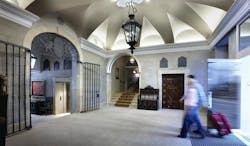
Palacio Guendulain is a sumptuous 4-star hotel in an excellent central location. This opulent hotel, which is steeped in history, showcases the best of Basque history, culture and cuisine and an excellent base for exploring Pamplona.
Standard double room
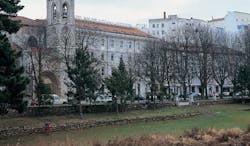
NH Palacio de Burgos is a 4-star hotel in an elegant 16th century building in an excellent central location. The wellness centre and gourmet restaurant afford guests a relaxing and indulgent experience.
Standard double room
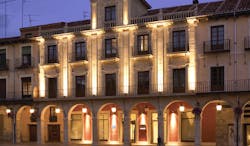
NH Collection León Plaza Mayor is a 4-star boutique hotel in an excellent central location. Juxtaposing historic architectural features with modern facilities, it is a comfortable, elegant spot to recuperate after enjoying the sights of León.
Standard double room
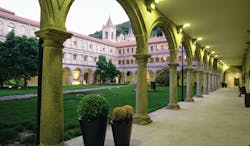
Parador de Santa Estevo is a 4-star boutique hotel which mixes historic architecture and modern interiors in a stunning rural location. Delicious local cuisine, excellent spa facilities and supremely comfortable accommodation afford guests an indulgent, secluded retreat.
Standard double room

Parador de Santiago de Compostela is a 5-star deluxe, historic hotel in an excellent location. Grand architecture and interiors and a restaurant serving authentic gourmet cuisine ensure that guests experience local culture and heritage.
Standard double room
It has been a lovely holiday & once again, you did not disappoint. Thank you again for everything. We look forward to contacting you again for our next adventure.Mrs H, July 2025
Holiday price guide Prices from £2,220 per person based on two people sharing a double or twin room.
Holiday Code SNFD07
Call us on 01392 441245
Luxury fly-drive touring holiday following the Way of Saint James from Pamplona to Santiago de Compostela, staying in Burgos, Leon and Santo Estevo
About Spanish Basque country
An Expressions tailor-made holiday to the Basque Country in northern Spain include the very best four and five star hotels across the region, including seaside retreats, city properties and vineyard hotels in La Rioja. Lying at the point between the Pyrenees and the Bay of Biscay is the Basque Country, a name which refers both to an autonomous community within Spain and to a larger cultural area which comprises parts of Spain and France. Known in Spanish as the Pais Vasco, you will find a unique culture here with fascinating traditions and a regional language which is widely spoken throughout. The region's key attraction is the closeness of both sea and country - the spectacular coastline boasts sweeping sandy beaches and rugged cliffs, stunning sunsets over the ocean and surf breaking on rocks; but only a short drive inland are rolling green hills and flower filled fields. Lying around 10 miles away from the north coast is the vibrant and energetic riverside city of Bilbao, whilst further east is San Sebastian, an elegant seaside resort set on a beautiful bay only a few miles away from the French border. Stretching away from the Basque coast and forming the border with France are the Pyrenees, where rocky mountains with waterfalls and lakes stretch into Navarre, a region which is dotted with unspoiled villages and mediaeval towns which line the pilgrimage route to Santiago de Compostela. Further west are the undulating hills of La Rioja, a region whose name is synonymous with the fine wines that it produces. Although parts of the region are heavily industrialised, there are many areas of unspoiled countryside as well as over 150 miles of coastline, making it a superb destination for a luxury holiday. The natural environment has long played a huge role in the lives of the region's inhabitants, with charming fishing villages along the coast which celebrate marine festivals as well as mountain farmers inland whose traditions remain unchanged. Throughout the region, visitors are sure to experience the unique culture of the Basque country through its language, cuisine and traditions.
Cultural highlights of Spanish Basque country
Bilbao's Guggenheim Museum, a Frank Gehry-designed landmark which transformed the city. The charming old town of San Sebastian, located between the beach and the river. Vitoria-Gasteiz, the capital of the Basque Country which is home to a mediaeval old town and two cathedrals. Guernica, a small town which was bombed during WWII and inspired a famous painting by Picasso. Fishing villages between Bilbao and San Sebastian including Bakio, Bermeo, Zumaia and Lekeitio, some of which are home to wonderful beaches and are also popular surf spots. Hondarribia, a historic town situated on the border with France. Pelota, a traditional ball game which is played throughout the region on a two-walled court. Numerous bars across the region which serve ‘pinchos’ (a Basque version of tapas), including those in Logroño. Wine-producing towns across La Rioja where visitors can enjoy cellar tours and wine tastings, which can also be enjoyed at the luxury vineyard hotels which we feature. Yuso and Suso Monasteries, a UNESCO World Heritage Site in La Rioja. The fortress city of Pamplona, renowned for the annual bull running festival.
Gastronomy of Spanish Basque country
The Basque Country is renowned for its varied and innovative cuisine, with numerous Michelin-starred restaurants found across the region. San Sebastian alone is home to eight Michelin-starred restaurants, two of which have been included within the top ten of Restaurant magazine's list of the world's 50 best restaurants. Wine is of course an incredibly important product, primarily in La Rioja which is known for its high-quality reds as well as a number of good white and rosé wines. A regional variation of tapas called ‘pinchos' can be found throughout the Basque Country and Navarre, frequently eaten as a snack in bars. Regional cooking varies according to location, with plenty of fresh fish and shellfish to be found along the coastline and a greater use of meat and game further inland. Local dishes include ‘Bacalao' (salt cod), ‘Marmitako' (fresh tuna stew), ‘Cordero al Chilindron' (spicy lamb stew) and ‘Txangurro relleno' (stuffed spider crabs).
Festivals in Spanish Basque country
19 to 20 January: San Sebastian Drum Festival, 29 June: Haro Wine Festival, 6 to 14 July: Los Sanfermines Bull Running Festival (Pamplona), July: San Sebastian Jazz Festival, 4 to 9 August: Festival of the Virgin Mary (Vitoria-Gasteiz), August: Bilbao's Big Week, September: San Sebastian International Film Festival, September: San Mateo Wine Festival (Logroño).
Climate in Spanish Basque country
The Basque Country's climate is generally quite mild and wet, although there is some variation between coastal and inland areas. The Basque coast experiences relatively high levels of rainfall, cold winters and warm summers where temperatures regularly reach 25 degrees, whilst some areas further south enjoy a Mediterranean climate, with hot summers and little rain.
Call us on 01392 441245
Luxury fly-drive touring holiday following the Way of Saint James from Pamplona to Santiago de Compostela, staying in Burgos, Leon and Santo Estevo
About Green Spain
Green Spain features some of the best four and five star hotels in the regions of Galicia, Asturias and Cantabria in northern Spain, including coastal properties, city hotels and rural retreats. From the pretty rivers on the west coast of Galicia to the spectacular mountains of Asturias and the prehistoric caves of Cantabria, Green Spain is a picturesque area in the north of Spain. With quiet sandy beaches, green landscapes, charming villages and Romanesque architecture lining the famed pilgrimage route which leads to Santiago de Compostela, there is plenty to discover. Although many of those who go on holiday to northern Spain simply pass through en route to Santiago de Compostela, the entire region has much to offer. Stunning beaches are almost untouched, whilst the mild climate has produced rich vegetation which covers unspoilt countryside. Both along the coast and further inland there are attractive cities, towns and villages with a wealth of historical, architectural and cultural sights to discover. Galicia and Asturias have strong cultural identities, both fiercely defending their Celtic traditions which include playing bagpipes, and even speaking their own languages. In the far west is the remote region of Galicia, known as ‘The land of a thousand rivers’ thanks to the numerous wide inlets that run into the sea. The Atlantic coastline is rugged, with rocky headlands, idyllic beaches and isolated fishing villages, whilst the interior is hilly and overwhelmingly green. To the east is the Principality of Asturias, an enchanting region of contrasts with secluded beaches as well as peaceful countryside. Forming a natural barrier in the south are the towering Picos de Europa mountains, a spectacular area with small mountain villages, lush pastures, emerald forests, sheer gorges and glittering lakes. Next is the small, mountainous region of Cantabria, where white sand beaches line the coastline facing the Bay of Biscay, separated by rugged headlands.
Highlights of Green Spain
Santiago de Compostela cathedral, the supposed resting place of St James the Apostle, from whose rooftop you can enjoy unforgettable views over the old town. The attractive Galician cities of Ourense, Pontevedra and Lugo, all with historical sites including Roman architecture. Maritime cities along the Atlantic coastline including A Coruna, Ferrol, Vigo, and Baiona. The Tower of Hercules, an ancient Roman lighthouse near A Coruna. Galicia's fjord-like inlets known as the Rías Altas (along the north-west coast) and the Rías Baixas (along the southwestern coast). The dramatic Cape Finisterre, so called because it was thought to be the westernmost point in Europe. The stunning Picos de Europa mountains, home to a diverse range of walking trails and the atmospheric Covadonga Sanctuary. Oviedo, the attractive capital of Asturias which is home to some remarkable pre-Romanesque churches. Altamira Caves, a UNESCO World Heritage Site with ancient rock paintings which are up to 20000 years old. Comillas, a beachside town with impressive architecture including a building designed by Antonio Gaudí. Pleasant towns along the shores of the Cantabrian Sea including Gijón and Llanes. Santillana del Mar, a picturesque village inland with a number of well-preserved mediaeval buildings. Santander, a lively port city with a historic quarter, a modern centre and the famous El Sardinero beach.
Festivals in Green Spain
February/March: Carnivals celebrating Lent, March: Vigo Reconquest Festival; March/April: Holy week celebrations, July: ‘A Rapa das Bestas’ horse festival held in Galician villages, July: Saint James the Apostle festival in Santiago de Compostela, July: Nava Cider Festival (near Oviedo), August: Festival of San Roque in Betanzos (near A Coruna), August: Santander International Festival.
Gastronomy in Green Spain
Cuisine in the north of Spain tends to be simple and hearty, making good use of the excellent local produce including abundant fish and seafood, plentiful meat and game and a great variety of vegetables. The regions produce a range of dairy products, from the mild soft cheeses of Galicia to the smoked cheese of Cantabria and the blue cheeses of Asturias. Asturias is known for its dry cider, whilst Galicia produces high quality wines, both crisp whites and fruity reds, as well as a strong liqueur, ‘Orujo.’ Local dishes include ‘Vieras de Santiago’ (Scallops, the symbol of St James, which are baked in their shells), ‘Empanada gallega’ (a Galician meat pasty), ‘Lacón con grelos’ (pork shoulder with chorizo, turnips and potatoes), ‘Caldo gallego’ (thick soup with meat, potatoes and beans), ‘Fabada’ (an Asturian stew with pork and beans), ‘Tarta de Santiago’ (an almond cake), ‘La quesada’ (a Cantabrian cheesecake) and ‘Sobaos Pasiegos’ (Cantabrian sponge cakes).
Climate in Green Spain
Green Spain has a wet and mild climate with warm summers and cool winters. Summer is a popular time to visit northern Spain as the weather is sunny yet comfortable, but you can expect good weather in Spring and Autumn as well. Rain falls throughout the year although there is little during the summer months. Temperatures are rarely extreme, although mountainous areas can be very cold in winter with snow falling.
Call us on 01392 441245
Luxury fly-drive touring holiday following the Way of Saint James from Pamplona to Santiago de Compostela, staying in Burgos, Leon and Santo Estevo
About Navarre and Aragon
The regions of Navarre and Aragón offer the opportunity to explore a largely unsung and under-visited region which stretches almost half the length of Spain. Its reaches include the famed city of Pamplona, best known for its daredevil bull-running in July, medieval castles and Romanesque churches and the exquisite Mudéjar architecture found across the region with the finest example in Zaragoza. Navarre was a medieval Basque kingdom and the Euskadi/Basque language is still recognised as co-official with Spanish in several areas. To the north of the regional capital lies the mountainous border with France, a vivid landscape of forested slopes and lush valleys whilst the centre of Navarre consists of wide basins and gentle hills, carefully tended with crops, livestock and woodlands. The Ebro, the second longest river in the Iberian Peninsula, runs through the southern area of Tudela and leads westwards into neighbouring Aragón. Visitors to Aragón will find a vast landscape of picturesque ancient villages, rolling green foothills and arid plains in the southern reaches of Teruel. Above all, Aragón is set apart from the rest of Spain by the majesty of the Pyrenees which mark its northern border. The three highest peaks of this chain, Pico Aneto, Pico Posets and Monte Perdido, are all found within the borders of Aragón, giving some of Spain’s finest hiking and adventure sports. Visitors to Navarre and Aragón will find that the variation in climate is just as dramatic as the changing landscape with often long, harsh winters and hot, balmy summers. Many of our hotels in Navarre and Aragón are housed in significant historic buildings, providing guests with elegant and comfortable accommodation options. The regions of Navarre and Aragon are particularly well suited for touring holidays in combination with different areas of Spain such as the Spanish Basque Country, Catalonia and Eastern Spain or the Heart of Spain.
Highlights of Navarre and Aragon
The Gothic cathedral in Pamplona (Iruña), a major stop on the Way of St James pilgrimage route through northern Spain, as well as the opulent Palacio del Gobierno de Navarra. The town of Tudela with its 13th century bridge across the River Ebro and beautiful old town, in addition to the otherworldly landscape of the nearby Bardenas Reales National Park. The charming town of Sos del Rey Católico, birthplace of Fernando of Aragón, with the grand Palacio de Sada and Church of San Esteban. The riverside Cathedral-Basilica of Our Lady of the Pillar in Zaragoza, the second largest church in Spain, celebrated for its eleven brightly coloured domes and elegant Baroque façade. Classic examples of Mudéjar architecture which combines Gothic and Islamic elements, some of the best examples of which are in the high-altitude town of Teruel in southern Aragón. Tranquil religious houses including the Cistercian Monastery de la Olivia and isolated Monastery of San Salvador de Leyre. Perhaps the most unique of these buildings is the Monastery of San Juan de la Peña in Aragón; set under an overhanging rock, this monastery was a supposed guardian of the Holy Grail. Formidable castles such as the Castillo de Loarre where visitors can explore the ramparts, dungeons and keep. The medieval old town of Huesca topped with its impressive gothic cathedral and nearby Castle of Montearagón. The stunning landscape of Ordesa National Park draws guests with its well-marked hiking trails, native wildlife and scenic “Horse’s Tail” waterfall. The small village of Torla is the gateway to the park and is a popular stopping point for visitors. Historic towns and villages, unspoilt by mass tourism, such as Estella (Lizarra), Olite, Albarracín, Ujué and Calahorra.
Festivals in Navarre and Aragon
January: Festive processions on the 5 January, marking the arrival of the Three Kings with huge floats. February: Festival of Santa Águeda in Alsasua. February/March: Carnivals celebrating the start of Lent, one of the best is in the town of Bielsa. March/April: Easter celebrations such as Las Tamborradas in the Aragonese town of Hijar and El Volatín in Tudela. Festival of Dance with performances throughout spring weekends in Pamplona. April: Traditional pilgrimage of San Marcos in Ujué on 25 April. July: San Fermín, the famous bull-running festival in Pamplona. International music festival of Navarre and also another in the medieval castle at Aínsa. Traditional Romero pilgrimage in Yebra de Basa. Tudela’s festival in honour of their patron saint, Santa Ana. July/August: Pyrenean Folk Festival in Jaca. Pyrenees South International Festival of Cultures in Huesca. Classical Theatre Festival in Olite. August: Medieval festival in Olite with market and historical demonstrations of trade and fashion. September: La Morisma, a re-enactment of an 8th century battle between Christians and Moors in Aínsa. October: Fiestas de Pilar in Zaragoza, a week-long celebration in honour of the city’s patron saint. November: Cinema Festival in Pamplona. December: El Olentzero - Christmas Eve celebrations across Pamplona and Navarre include this traditional Basque character who comes late at night to drop off presents for children.
Gastronomy in Navarre and Aragon
Cuisine across these regions is varied with tastes to suit everyone’s palate, thanks to the vast landscape and products grown here. Whilst there is no coastline, there is great choice with plentiful meat and game, locally grown crops and vegetables and fresh-water fish. Cuisine is based on traditional recipes which have been handed down through generations and modernised. In Aragón you will find menus featuring stews, ternasco (roasted lamb) and jamón from Teruel. Not all Aragonese cooking is based on meat with river-caught fish like trout and eel also used. Try local olive oil from Empeltre, asparagus from the banks of the Ebro and sweet onions from Fuentes. Fruits grown in Aragón include pears, apples, cherries and plums and are exported throughout Spain. The gastronomy in neighbouring Navarre is not dissimilar yet offers additional treats such as black truffles from the Allín valley and woods of the Lóquiz mountains. Dining out in Pamplona is a treat with restaurants to match all budgets and styles, from local bars to Michelin-starred destinations. Whatever your choice, be sure to try the local wines as well as the Navarran spirit pacharán, made with sloe berries and anise.
Climate in Navarre and Aragon
This part of Spain has a mixed climate which is inextricably linked with the contrasting landscape. The northern areas are amongst the coldest in Spain with the winter months of November to April often bringing freezing temperatures, snow and making mountain roads impassable. On the other hand, the arid plains of southern Aragón can be very hot in the summer months with residents and visitors alike spending the warmest hours relaxing inside. Rain falls throughout the year in the northern areas, although with less frequency throughout the summer. We recommend speaking to one of our Personal Travel Specialists about your interests in order to suggest the best time for your visit.

